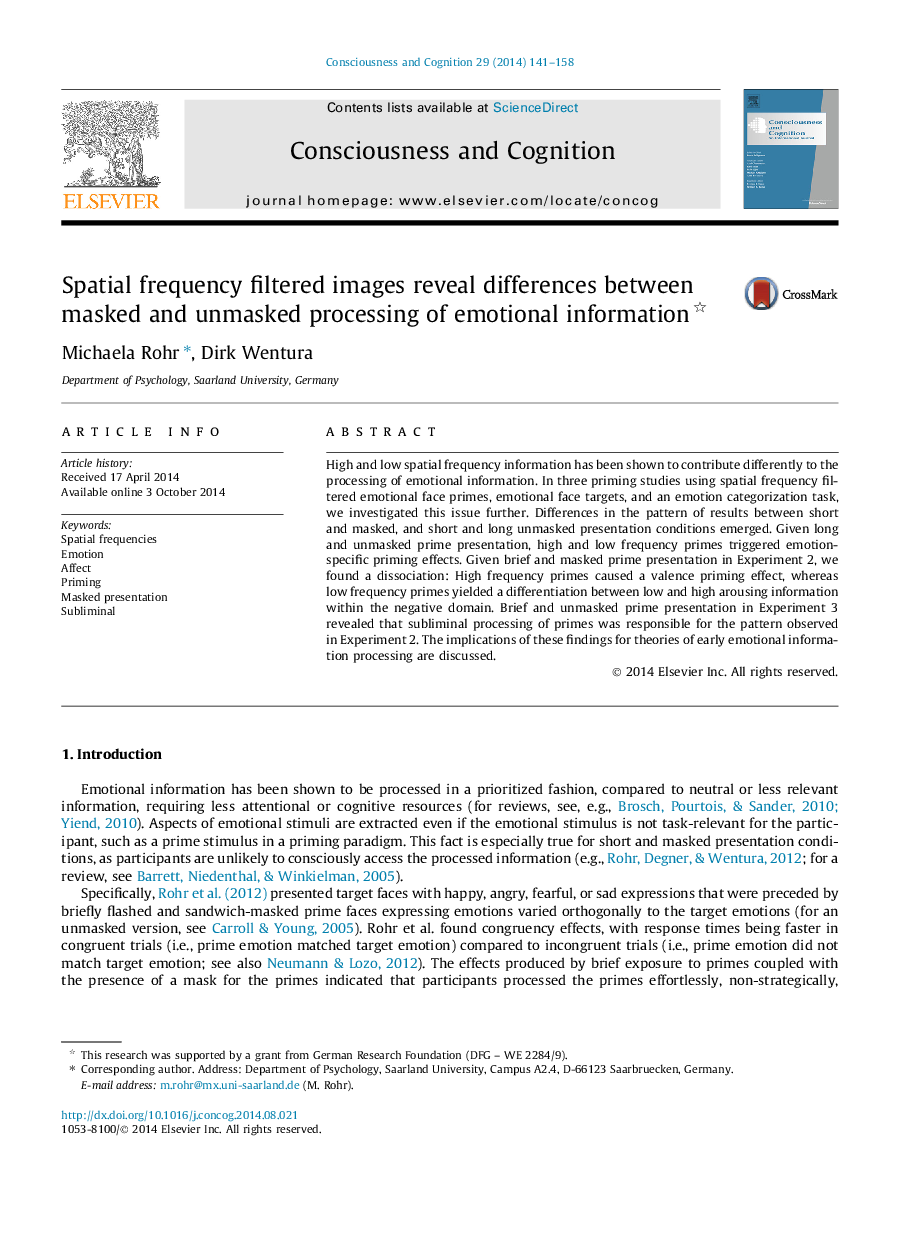| Article ID | Journal | Published Year | Pages | File Type |
|---|---|---|---|---|
| 7289817 | Consciousness and Cognition | 2014 | 18 Pages |
Abstract
High and low spatial frequency information has been shown to contribute differently to the processing of emotional information. In three priming studies using spatial frequency filtered emotional face primes, emotional face targets, and an emotion categorization task, we investigated this issue further. Differences in the pattern of results between short and masked, and short and long unmasked presentation conditions emerged. Given long and unmasked prime presentation, high and low frequency primes triggered emotion-specific priming effects. Given brief and masked prime presentation in Experiment 2, we found a dissociation: High frequency primes caused a valence priming effect, whereas low frequency primes yielded a differentiation between low and high arousing information within the negative domain. Brief and unmasked prime presentation in Experiment 3 revealed that subliminal processing of primes was responsible for the pattern observed in Experiment 2. The implications of these findings for theories of early emotional information processing are discussed.
Related Topics
Life Sciences
Neuroscience
Cognitive Neuroscience
Authors
Michaela Rohr, Dirk Wentura,
